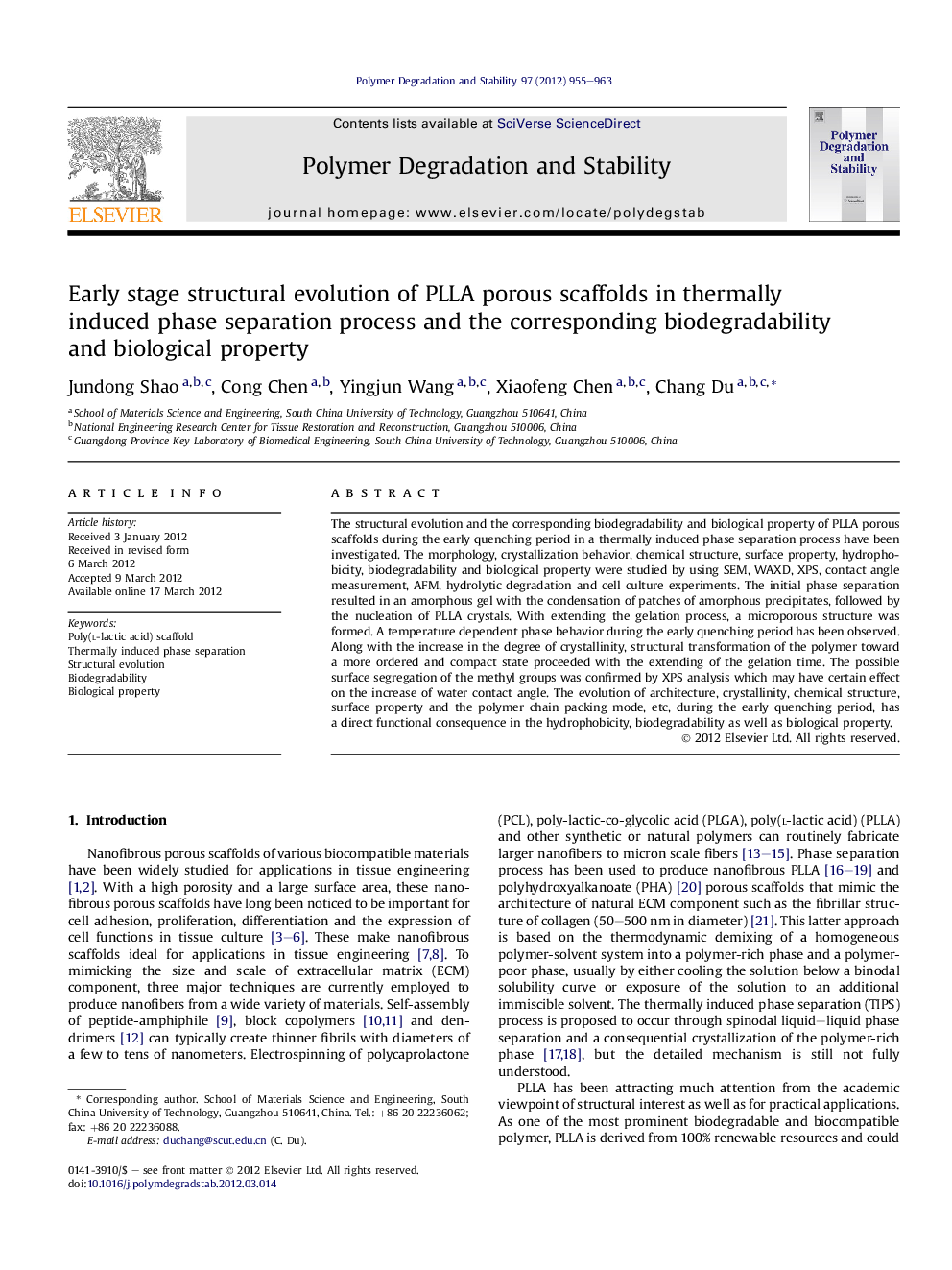| Article ID | Journal | Published Year | Pages | File Type |
|---|---|---|---|---|
| 5202805 | Polymer Degradation and Stability | 2012 | 9 Pages |
Abstract
The structural evolution and the corresponding biodegradability and biological property of PLLA porous scaffolds during the early quenching period in a thermally induced phase separation process have been investigated. The morphology, crystallization behavior, chemical structure, surface property, hydrophobicity, biodegradability and biological property were studied by using SEM, WAXD, XPS, contact angle measurement, AFM, hydrolytic degradation and cell culture experiments. The initial phase separation resulted in an amorphous gel with the condensation of patches of amorphous precipitates, followed by the nucleation of PLLA crystals. With extending the gelation process, a microporous structure was formed. A temperature dependent phase behavior during the early quenching period has been observed. Along with the increase in the degree of crystallinity, structural transformation of the polymer toward a more ordered and compact state proceeded with the extending of the gelation time. The possible surface segregation of the methyl groups was confirmed by XPS analysis which may have certain effect on the increase of water contact angle. The evolution of architecture, crystallinity, chemical structure, surface property and the polymer chain packing mode, etc, during the early quenching period, has a direct functional consequence in the hydrophobicity, biodegradability as well as biological property.
Related Topics
Physical Sciences and Engineering
Chemistry
Organic Chemistry
Authors
Jundong Shao, Cong Chen, Yingjun Wang, Xiaofeng Chen, Chang Du,
